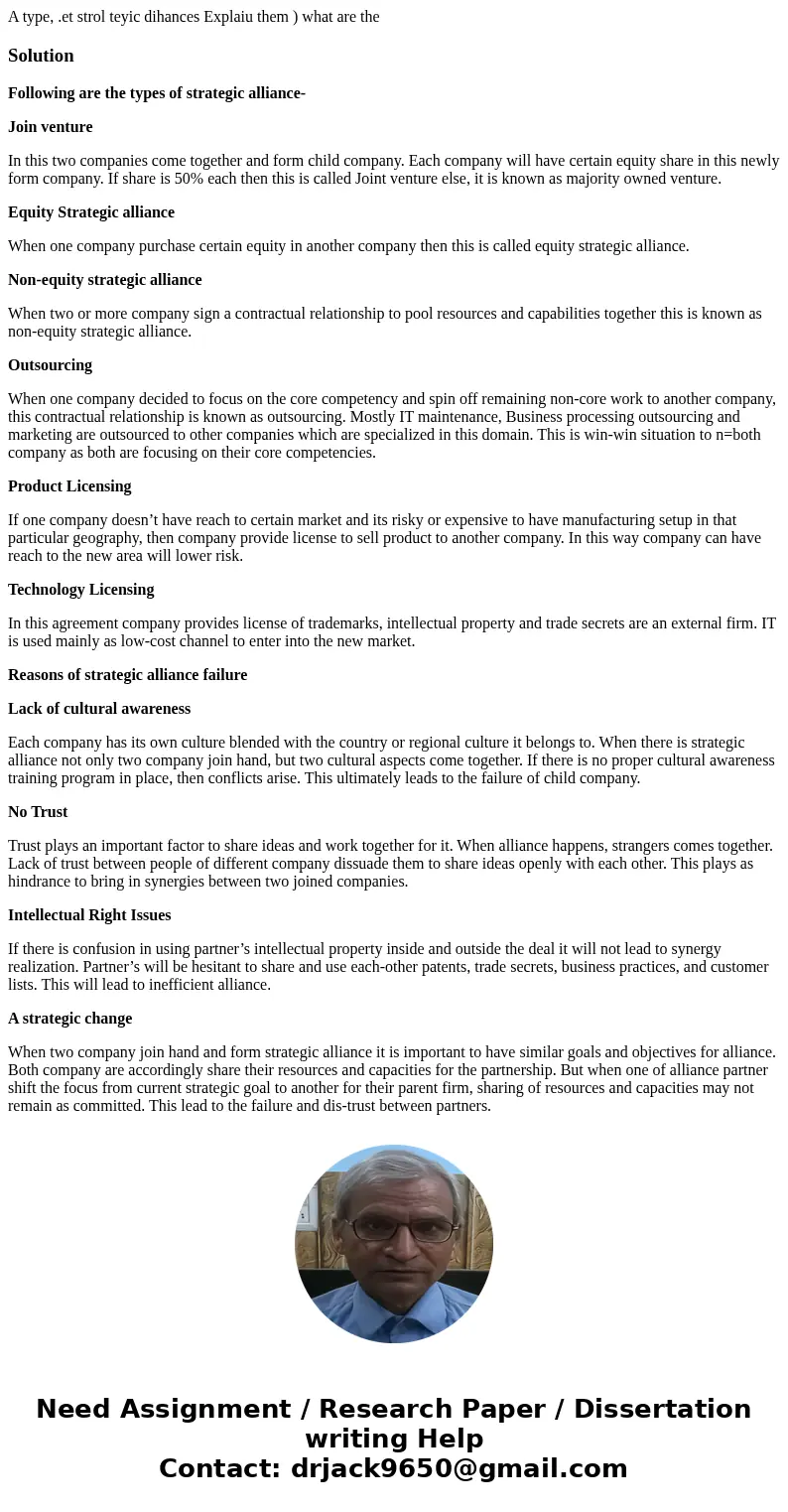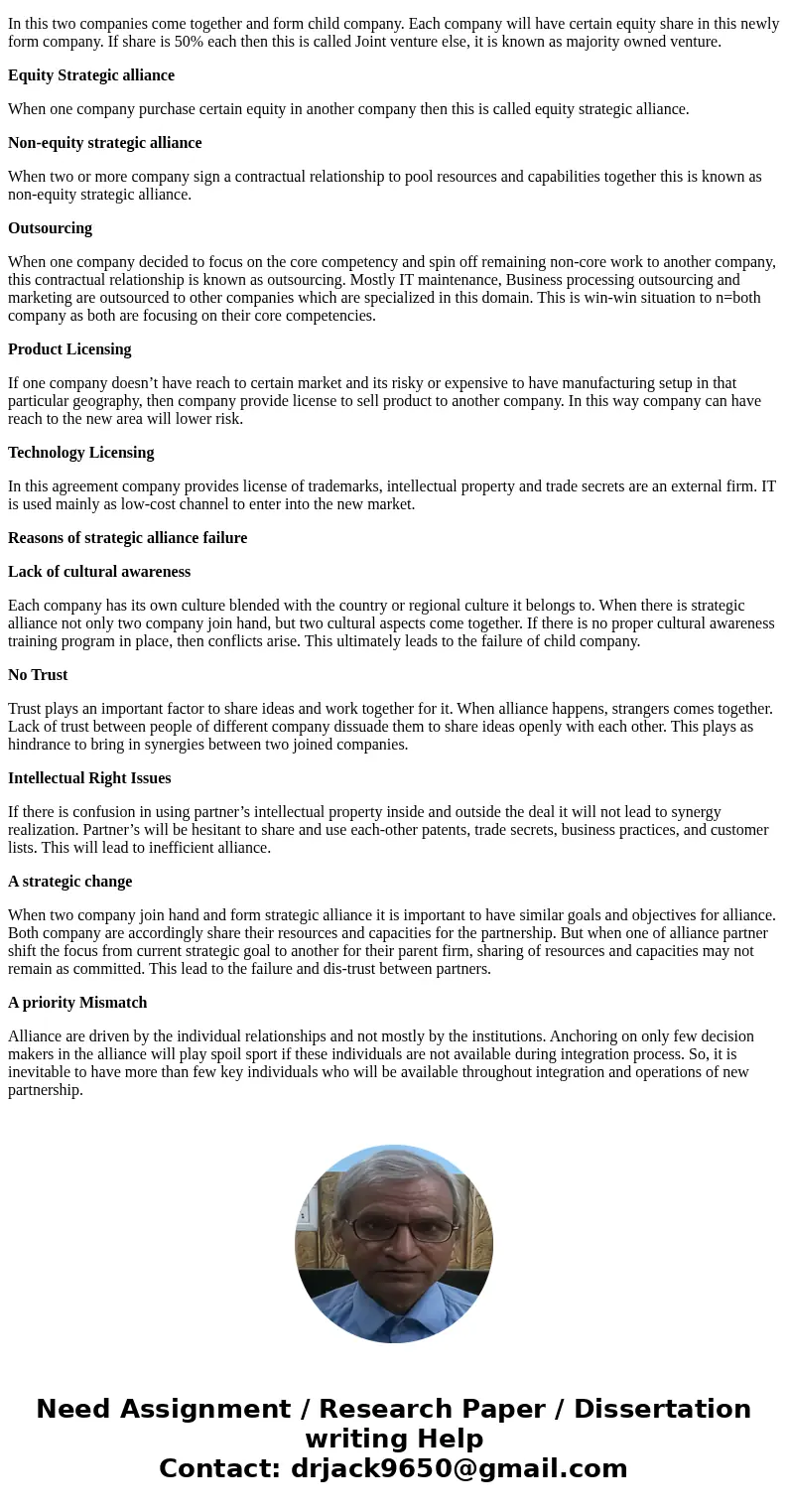A type et strol teyic dihances Explaiu them what are the So
Solution
Following are the types of strategic alliance-
Join venture
In this two companies come together and form child company. Each company will have certain equity share in this newly form company. If share is 50% each then this is called Joint venture else, it is known as majority owned venture.
Equity Strategic alliance
When one company purchase certain equity in another company then this is called equity strategic alliance.
Non-equity strategic alliance
When two or more company sign a contractual relationship to pool resources and capabilities together this is known as non-equity strategic alliance.
Outsourcing
When one company decided to focus on the core competency and spin off remaining non-core work to another company, this contractual relationship is known as outsourcing. Mostly IT maintenance, Business processing outsourcing and marketing are outsourced to other companies which are specialized in this domain. This is win-win situation to n=both company as both are focusing on their core competencies.
Product Licensing
If one company doesn’t have reach to certain market and its risky or expensive to have manufacturing setup in that particular geography, then company provide license to sell product to another company. In this way company can have reach to the new area will lower risk.
Technology Licensing
In this agreement company provides license of trademarks, intellectual property and trade secrets are an external firm. IT is used mainly as low-cost channel to enter into the new market.
Reasons of strategic alliance failure
Lack of cultural awareness
Each company has its own culture blended with the country or regional culture it belongs to. When there is strategic alliance not only two company join hand, but two cultural aspects come together. If there is no proper cultural awareness training program in place, then conflicts arise. This ultimately leads to the failure of child company.
No Trust
Trust plays an important factor to share ideas and work together for it. When alliance happens, strangers comes together. Lack of trust between people of different company dissuade them to share ideas openly with each other. This plays as hindrance to bring in synergies between two joined companies.
Intellectual Right Issues
If there is confusion in using partner’s intellectual property inside and outside the deal it will not lead to synergy realization. Partner’s will be hesitant to share and use each-other patents, trade secrets, business practices, and customer lists. This will lead to inefficient alliance.
A strategic change
When two company join hand and form strategic alliance it is important to have similar goals and objectives for alliance. Both company are accordingly share their resources and capacities for the partnership. But when one of alliance partner shift the focus from current strategic goal to another for their parent firm, sharing of resources and capacities may not remain as committed. This lead to the failure and dis-trust between partners.
A priority Mismatch
Alliance are driven by the individual relationships and not mostly by the institutions. Anchoring on only few decision makers in the alliance will play spoil sport if these individuals are not available during integration process. So, it is inevitable to have more than few key individuals who will be available throughout integration and operations of new partnership.


 Homework Sourse
Homework Sourse